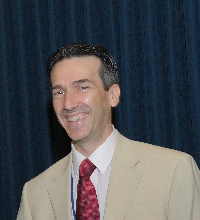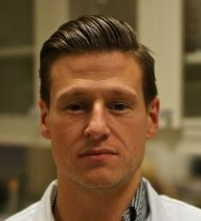MSACL 2025Montr?al Sept 21-26 |
Details
|
Academic Workshops
There is no fee to attend these workshops. They are included in your conference registration.
Tuesday Sep 23 from 02:30 PM (1430) to 04:00 PM (1600)
1. A Path From Biomarker Discovery to Targeted Protein Method Development in Clinical Samples |
2. Quantification of Protein and Peptide Biomarkers in Diabetes Clinical Research |
3. Navigating FDA Regulations : Critical Steps in Test Development and Risk Management |
4. Interventional Mass Spectrometry |
6. Design of Experiments for Optimization of LC-MS Clinical Assays |
7. Enabling the Patient Journey through Patient Centric Sampling |
Workshop Summaries
|
Tuesday 1600 |
Objectives
Summary In this workshop, we will thoroughly explore the journey from gathering and utilizing comprehensive data from various discovery proteomics analyses to developing targeted proteomics methods for protein biomarker verification. The workshop is divided into two sections. In the first section, we will cover the fundamentals of discovery proteomics, including the latest trends in methodology and instrumentation, with comparative analyses. We will then delve into a Data Independent Acquisition (DIA) discovery proteomics strategy, focusing on study design, quality control approaches, and the data analysis pipeline for biomarker selection. Additionally, we will present and discuss a case study involving a large cohort. In the second section, once a set of target proteins has been determined, we will walk through the process of data mining from various sources such as public data repositories as well as in-house acquired data for the targeted proteomics assay development. A brief introduction on Skyline and various technical aspects such as the choice of instrument, flowrate, and acquisition strategy at every step of the targeted proteomics assay development will be tackled and discussed. Furthermore, a quality control strategy for large scale targeted proteomics measurement will be introduced and analyzed. Syllabus Section 1: Fundamentals of Discovery Proteomics
Section 2: Targeted Proteomics Assay Development
2384
|
||||||||
|
Tuesday 1600 |
Objectives
Summary The precise and accurate quantification of proteins and peptides involved in diabetes will help facilitate research into disease pathogenesis and ultimately improve the diagnosis, prognosis, and therapeutic management of patients with diabetes. Unfortunately, most of the studies to date have relied on immunoassays, with little effort put into demonstrating the specificity of the reagents or the robustness of the assays. Furthermore, recent publications have highlighted the limitations of many commercial assays, including a failure to detect the intended target. Rigor and reproducibility could be substantially improved by applying mass spectrometry to the quantification of these biomarkers. Major improvements in sample preparation and instrumentation have made mass spectrometry–based targeted proteomics a highly reproducible methodology for detecting and quantifying proteins and peptides. In addition, the ability to quantify specific proteoforms provides insight into prohormone processing and post-translational modifications and creates an opportunity to identify and validate new biomarkers that can be used for disease stratification. The NIDDK recently funded several projects that aim to use targeted mass spectrometry to quantify human plasma/serum proteins and peptides of interest to the diabetes clinical research community. During this workshop, the presenters will provide an overview of the recent advances toward this goal that have been made by the Targeted Mass spectrometry Assays for Diabetes and Obesity Research (TaMADOR) consortium, with a special focus on biomarkers important in type 1 diabetes. Syllabus
Moderated by:
2385
|
||||||||||||||
|
Tuesday 1600 |
Objectives
Summary Since clinical laboratories developing tests are classified as manufacturers, strict regulatory guidelines from the FDA have been implemented. A thorough understanding of the various phases of test development is crucial in this evolving regulatory landscape, as laboratorians develop tests to meet clinical needs. This workshop will focus on the critical steps focusing on pre-validation stages and the determination of risk tolerance during the feasibility study. The session will explore foundational guidelines from CLSI and ISO standards, equipping participants with the knowledge and tools needed for effective navigation of regulatory and quality requirements. To reinforce the learning, the workshop will integrate case studies and practical applications that provide real-world insights into overcoming challenges and ensuring compliance. Syllabus
2379
|
|||||
|
Tuesday 1600 |
Objectives
Summary The clinical environment is a highly dynamic setting, and the decisions made can have huge downstream consequences for patient outcomes and ongoing care. To make these decisions clinical testing is used to reduce subjectivity, provide data, and ensure patient safety. Mass spectrometry is a useful tool in clinical care due to the high sensitivity and specificity for the detection of metabolites in bodily fluids such as blood, plasma, urine, saliva, stool, and mucus. Most mass spectrometry in the clinical setting is performed offline, with sample collection performed at the point of care setting and then transported to the laboratory for extraction and analysis. Ambient ionisation mass spectrometry revolutionized the use case for mass spectrometry in the clinic by enabling direct sample analysis, opening new clinical analysis opportunities. Coupling ambient ionisation mass spectrometry with machine learning techniques enables dynamic analysis of thousands of metabolites directly from clinical samples, without the need for sample preparation. These advances in technology have led to the development of novel uses of mass spectrometry for intervention and aiding clinical decision making, such as surgical margin detection, point of care testing, and mass spectrometry guided surgery. Interventional mass spectrometry describes a clinical assay from which the results steer a patients ongoing treatment. The decision to intervene in clinical care needs to be fast and robust, with the testing taking place at the point of care. Syllabus
2380
|
||||||||
|
Tuesday 1600 |
Objectives
Summary Ion mobility-mass spectrometry (IM-MS) has become commonplace in biological research over the last decade, yet its transition to a more "routine" tool in fields such as clinical, forensic, and toxicological applications has been hampered by challenges in sensitivity, ease of use, and software compatibility, etc. While the benefits of separation, especially for isobaric and isomeric compounds, have been extensively demonstrated, method development is still often required to maximize signal-to-noise (S/N). In this workshop, we will invite several leaders in Clinical Chemistry to provide their perspectives on the potential advantages of integrating ion mobility into clinical workflows and high value applications, but also highlight the challenges in technology, software, and interpretation, etc. The presenters will then provide recent examples of attempts to overcome these challenges, especially focusing on recent work (i.e., within the last year). A brief introduction to ion mobility fundamentals, the different techniques, and data interpretation will also be provided. Syllabus
2381
|
||||||||
|
Tuesday 1600 |
Objectives The objective of the workshop is to provide an introduction into design of experiments (DoE) for clinical application with special focus on optimization of MS-based clinical assays. The workshop is focused on practical implementation of DoE and will demonstrate how method development of sample preparation and UPLC-MS/MS method for quantification of clinical biomarkers can become much more efficient by utilizing DoE. Summary Design of experiments (DoE) is an efficient tool for development and optimization of UPLC-MS/MS platform for quantification of biomarkers in complex biological matrices. The UPLC-MS/MS platform is composed of several processes which involve numerous experimental factors, which need to be simultaneously optimized to obtain a true maximum sensitivity with adequate resolution at minimum retention time. DoE offers an efficient approach for performing experiments in accordance with a predefined plan, modelling by empirical functions, and graphical visualization. Basic concept of DoE will be presented with emphasis on practical implementation of DoE which includes the three main stages, screening, optimization, and robustness testing. To demonstrate the cost-effective benefit of DoE, which allows the effect of variables to be assessed with only a fraction of the experiments that would be required by changing one-separate-factor-at-time (COST) approach, two case studies will be presented. The first case is optimization of sample preparation in bottom-up targeted protein LC-MS workflow using DoE. The second case is an optimization of a UPLC-MS/MS assay for clinical diagnostic and therapeutic drug monitoring of patients with adenine phosphoribosyltransferase (APRT) deficiency, which is an inborn error of purine metabolism. A polynomial model which corresponds to the objective of the case study is specified and an experimental design that supports the selected model is generated. Significant factors were studied via central composite design and related to responses utilizing partial least square (PLS)-regression. Both cases showed that DoE is an excellent tool for optimization of sample preparation for biological samples and UPLC-MS/MS quantification method for clinical biomarkers. A significant reduction of sample preparation time was achieved with increased yields for selected peptides and a reliable UPLC-MS/MS assay for simultaneous quantification of urinary 2,8-dihydroxyadenine (DHA) and adenine was optimized efficiently with DoE. Syllabus
2382
|
|||||||||||
|
Tuesday 1600 |
Objectives
Summary Numerous technologies are now commercially available that facilitate the collection of human blood samples in locations away from the clinical setting. This approach is termed patient centric sampling, or microsampling and can involve the collection of samples from a finger stick, or from elsewhere on the body. The samples can be dried or liquid, and are often a smaller volume than those obtained by traditional phlebotomy. The use of these approaches potentially enables samples to be collected from currently underserved communities (pediatric, elderly, remote areas, etc). Furthermore, the approach may enable more regular sampling of individuals to be performed and facilitates choice for the patient about how and where samples will be collected. These technologies also have the potential to overcome the discomfort, pain and fear that is encountered by many when collecting samples by traditional phlebotomy. This workshop will give the background to this approach for biological specimen collection. Workshop participants will then take part in a facilitated discussion focusing on the challenges of implementing these technologies. Participants will then take part in facilitated break-out groups to provide tractable solutions to overcome these challenges and what future activities are required to facilitate this. Syllabus
Moderated by:
2383
|
|||||||||||||||||






















